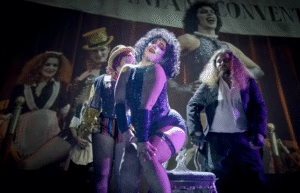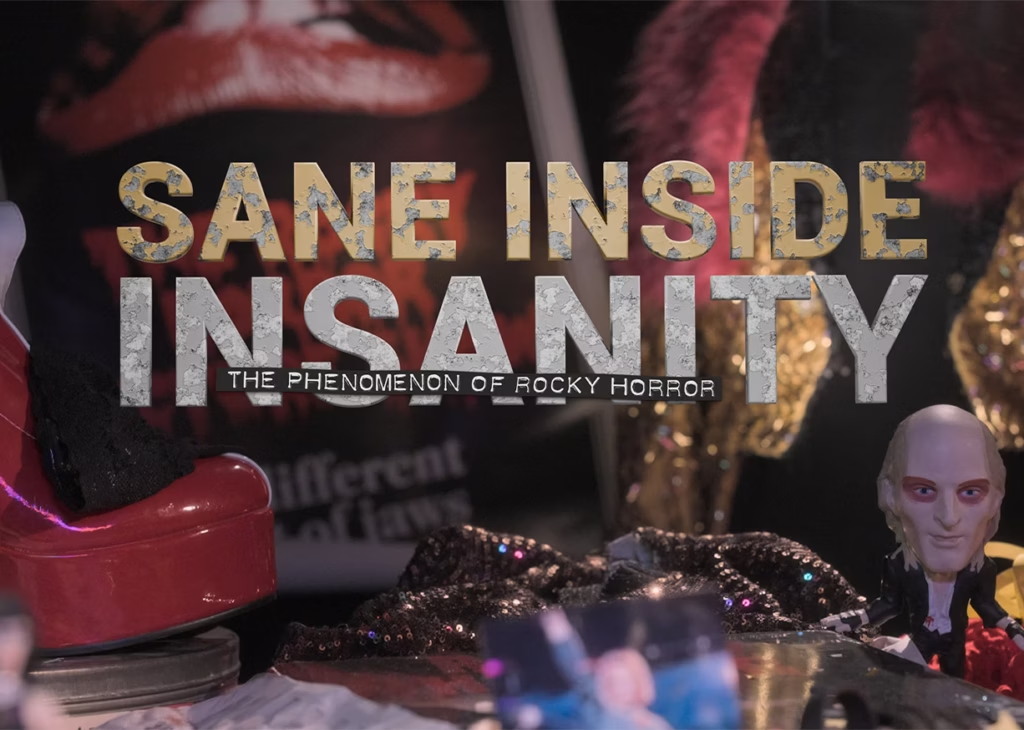German producer and director Andreas Zerr is not your average Rocky Horror Picture Show stan. In fact, he’s explicitly expressed, “I’m not a fan.” But, as you make your way through his SANE INSIDE INSANITY documentary, you unearth the story of how the 1975 musical comedy‑horror film came to be a culturally relevant artpiece, cultivating a fanbase far beyond anyone’s expectations and shifting a societal narrative around freedom of expression, queerness, and individuality.
“[There’s been] a lot of reviews calling our work a love letter to Rocky Horror, which it was never meant to be,” Zerr tells CONE. Originally, the filmmaker had no interest in the movie. “I watched it a few times on a very bad VHS copy, and it never really spoke to me,” he continues. Zerr recalls hearing a song from the soundtrack years later, which ultimately led to his interest in investigating its cultural relevance.
“The initial idea wasn’t to make a full scope documentary about the history of Rock Horror, rather a 30-minute feature of the making-of,” he explains. During the recording process, the producer began to discover the anomaly of the film and the sheer gravity of its audience. This ultimately changed his attitude toward its cultural impact. “When we found out there was a stage play before the film, how many people were involved, what the process was like, and how interconnected everyone was in London, it became a very interesting story,” he explains.
A pivotal moment came in 2014 when Zerr interviewed Sue Blane, the original stage play’s costume designer. “Blane really opened our eyes to what Rocky Horror means,” he says, noting that their conversation was cathartic. “When we first met her, she was so charming and interesting [to] interview. That was one of the things that was imminent for the decision to make this documentary on a bigger scope.” While Blane’s mastery of intricate garment-making initially swept Zerr and his team away, it was The Rocky Horror Picture Show community that fueled his drive to create something exceptional.
Connecting with fans via social media revealed the enduring dedication of the audience. For anyone who’s ever found themselves on the outskirts of society, Rocky Horror has been the guide on how to effortlessly be yourself, void of any judgment. “No community provides such a safe space for so many people,” says Zerr. “We spoke to lots of fans and shadow cast members, and they told us how [the film] provides a sense of friendship, camaraderie, and community for them. I’ve heard so many fans say that Rocky Horror is relatable because of the variety of characters. You don’t have ‘the good guys’ and ‘the bad guys.’ They are all kinds of good and bad in between.”

SANE INSIDE INSANITY is a powerful story that captures not just the devotion of Rocky Horror’s audience, but also the story of how the phenomenon began. Through conversations with original stage casts and rare behind-the-scenes material, Zerr uncovers the creative hurdles and collaborations that turned a modest stage play into a lasting cultural touchstone.
Rocky Horror may have a cult following today, but its path to acclaim is a little more complicated than often acknowledged. While the original stage play enjoyed success, its box office release completely flopped. “[It] was against all odds if you take a look at when it came out,” Zerr says. “It was an instant success, thanks to the original creative team—Jim Sharman, who wrote it, Richard O’Brien, the musical director, Sue Blane, the costume designer, and Brian Thompson, the scenic designer—but [it] also kind of failed [commercially].”
During research on the film, the director notes a striking aspect: “the interconnectedness of the people.” This was evident in the film’s creative team. “Even though it was based in London, half of the creative crew came from Australia or New Zealand,” Zerr adds. “They all got together in 1973 and created such an impressive work of art from so little. They just had the concept, and the rough script Richard O’Brien wrote.”
It’s easy to watch stars like Susan Sarandon and Tim Curry now and be in awe of their showmanship and sheer hunger to create something unique. But despite such talent, the working-class community surrounding the production had very little access to resources. Thankfully, the creative team’s exposure to London itself and their sheer determination allowed them to produce lasting art.
“We spoke with people who were involved in the first three weeks of developing,” recalls Zerr. “They had the concept, but they didn’t have the money. I think they had $2,000 they got from Michael White. They got paid between $12-$17 per week. It’s really impressive that something based on so little financial support, yet so much creativity and eagerness, [manifested] into creating something like Rocky Horror.”
Fifty years later, Jim Sharman’s Rocky Horror Picture Show continues to provoke discussion. But has exploring the story through his own documentary changed anything for Zerr? “I wouldn’t say I’ve changed my mind.” But, “the documentary has expanded my mind about it.”
Whether you’re a die-hard fan, a casual listener of the soundtrack, or simply intrigued by the phenomenon of this cult classic, Zerr hopes that his documentary entertains audiences. He adds, “Rocky Horror is a wonderful thing that happened to the world. It made the life of so many people such a much better place, and I hope our documentary reflects that.”

